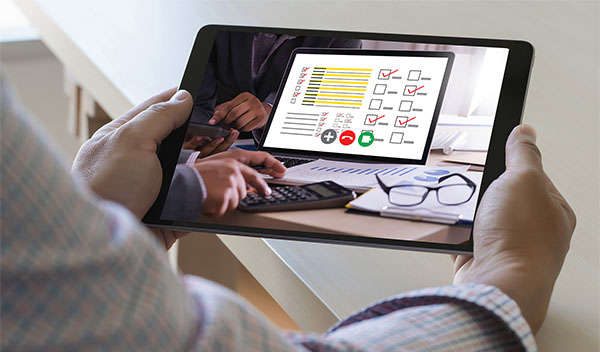By the term “Sell Price” is meant the ability to convince the Customer about the justness of the price of a product and service in a competitive environment. Some people call it Value Selling. For this discussion which is about Salesperson’s task, the following two things are assumed to be in place: a) Sound pricing strategy. b) Pricing methods to decide on individual deals so the Customer sees it as a value pricing rather than a price being ‘charged’.
For a Salesperson to sell price well, a pre-requisite is that he or she should follow a professional sales process right from the word go, so that Customer sees the value he is getting. After all, that is the bedrock of Value Selling. And having done that, Salesperson must ‘overcome some common pitfalls of price handling’.
For a Salesperson to sell price well, a pre-requisite is that he or she should follow a professional sales process
The pitfalls are surprisingly easy to overcome, although many Salespeople do not realize this and struggle to attain an imaginary magic wand for Value Selling. Nobody can deny that a high price can be a serious sales obstacle. There is no miracle pricing method for making the sale when the only difference in two offers is a striking difference in price. But price is rarely the only difference!
This article has a key concept called the Value Equivalence Line – plotted on a graph of perceived benefits on X axis and perceived price of your offer on Y axis. The operative word is perceived. Both the price and benefits are fully a matter of perception management - job of front line sales.
As a famous quote of John Ruskin goes – “There is hardly anything in the world that some man cannot make a little worse and sell a little cheaper. People who buy on price alone are this man’s lawful prey”. You do not only not want to cut corners in your offering to sell cheaper; but also want to save your valued Customer from falling prey to your competitor who may do that!
That is what we call “selling of price”.
It begins with the mind-set of a Salesperson.
Psychological aspects play a strong role in Value Selling

Many a times the issue is the price conscious Salesperson rather than a price conscious Customer. To keep price in its proper place in the sales interaction with Customer, Salesperson himself or herself must not become oversensitive to price. This is a question of two psychological aspects rather than pricing methods.
Many a times the issue is the price conscious Salesperson rather than a price conscious Customer.
- First psychological aspect is that any Salesperson constantly hears the words to the effect “you are expensive”. He or she can get hypnotized by these words. So much so that instead of the Customer it is the Salesperson who often leads the Customer’s mind to that very subject too early. Perhaps the Salesperson wants to get rid of the tension himself!
A more positive approach is to focus on Value Selling and stress it. Obviously for that, the Salesperson must believe in own price
- Second psychological aspect of the price is that it is the only weapon the Customer has. So, he or she tends to use it as defense in a ‘fight’. Of course the Salesperson does not see selling as fight. But he or she must also set the Customer’s expectation and show that he or she is there to help the Customer and not fight.
This can be done very simply – all you need to ensure is to have a meaningful agenda for each meeting with Customer. Some examples are as below –
Power of a good meeting objective is to take away Customer’s mind from price. Too many Salespeople pleasantly greet the Customer and then just wait for him to say something. And the only thing he can talk about is well, price!
Price Handling Skills
Above points make a case for right attitude to price selling. A good attitude must be supplemented with right skillsets to sell price well. Acquiring and honing any skill is a matter of practice and therefore good Sales Training to get a framework with which to practice and become proficient, is the way forward. Here we only briefly describe three skillsets of Value Selling. Once practiced well, these can get the best out from a Company’s sound pricing strategy.
A good attitude must be supplemented with right skillsets to sell price well.
- Ensuring that price is presented to Customer at the right stage. If there is a nominal list price which is anyway published, then it is the discounted price that we mean here.
- Presenting the price well, at the stage when it should be presented.
- Having presented it well, how to try and sell the difference – handling the price objection.
In few cases (not all, in fact not in most cases) when the difference cannot be sold fully, Salesperson has to embark on negotiations to see if he or she can at least get something extra in price or in something else. That is a subject of another Mercuri Insight document.
The three critical skillsets:-
- RIGHT STAGE TO PRESENT THE PRICE: Salesperson should present the price only after Customer has realized benefits fully. There are time tested Mercuri techniques for the Salesperson to postpone presentation of the price to the right stage.
- PRESENTNG THE PRICE POSITIVELY: Words Salesperson uses to present the price and the method of telling the price can have subtle impacts on the Customer’s mind – positive or negative. While maintaining sincerity and truthfulness Salesperson must emphasize positive aspects of price, through the words chosen and way of telling price, along with the benefits, while trying to link it to the usage to convert it to a smaller number.
- HANDLING THE PRICE OBJECTION: The skill of handling the price objection consists of 5 steps leading to justification of the EXTRA price as perceived by Customer. It needs showing him or her the EXTRA benefits. Handling the price objection is not to justify the total price but only the price difference with whatever Customer is comparing with.
Handling the price objection is not to justify the total price but only the price difference with whatever Customer is comparing with.
Justifying the price difference
Two approaches to think through the justification are:-
- Quantifying each of the benefits and stacking them up as value. For example, “Each extra trip to provide for more servicing expected without our so and so technology may cost you Rs X per year in transportation even if the service is free, plus use of the latest technology may be worth 5% premium for your marketing of the product worth Rs Y per year. X + Y is almost double of Z which you see as the price difference.”
- Pointing out the risk of not buying or not buying from you. A Customer who thought that the new proposed heating plant to replace existing one is too expensive relented when he was shown the calculations of fuel for two years when continuing with the old plant.


















